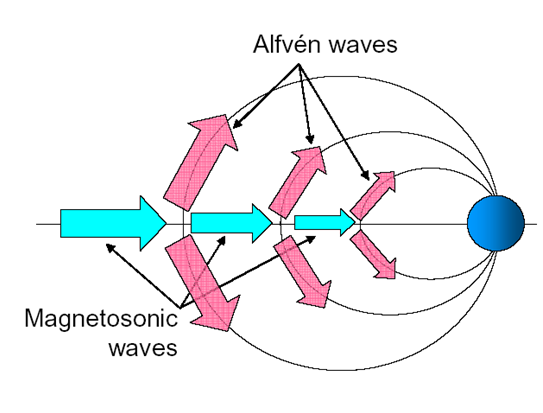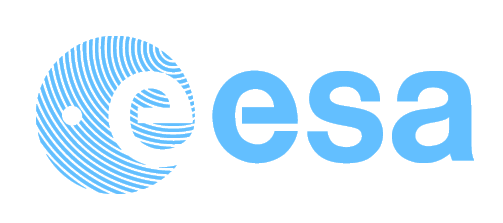ULF waves

Upstream waves driven through cyclotron resonance by solar wind ions by an backscattered from the Earth’s bow shock are considered to be the
main day side energy source of ultra low frequency (ULF) fast mode waves in the Pc3-4 frequency band (6.7 – 100 mHz) in the Earth’s magnetosphere.
The wave energy that is generated in the foreshock region is transferred across magnetic field lines to reach the inner magnetosphere where it is observed as compressional Pc3-4 waves.
Magnetohydrodynamic (MHD) waves propagating from the foreshock to the ground are affected by both the magnetosphere and the ionosphere. In the inhomogeneous magnetosphere compressional waves (F in figure) launch shear Alfvén waves (A in figure) propagating along magnetic field lines. The coupling is the most efficient where the UW frequency matches the local field line resonance (FLR) eigenfrequency. Fast mode UWs and associated FLRs are the primary day side source of low and middle-latitude ULF waves. The ionosphere is a boundary of high conductivity separating the magnetosphere and neutral atmosphere. Under day side conditions large scale compressional waves are partially reflected from the ionosphere, while on the night side they are transmitted directly to the ground. Mode conversion from compressional to Alfvén mode is negligible at typical scales. Shear Alfvén waves are partially reflected, partially converted by the ensuing ionospheric current system into an evanescent compressional mode with an e-folding distance depending on the azimuthal wave number.
Observations of ULF waves in the topside ionosphere is of key importance in understanding the role of the ionosphere in the wave-plasma medium interactions.
Magnetohydrodynamic (MHD) waves propagating from the foreshock to the ground are affected by both the magnetosphere and the ionosphere. In the inhomogeneous magnetosphere compressional waves (F in figure) launch shear Alfvén waves (A in figure) propagating along magnetic field lines. The coupling is the most efficient where the UW frequency matches the local field line resonance (FLR) eigenfrequency. Fast mode UWs and associated FLRs are the primary day side source of low and middle-latitude ULF waves. The ionosphere is a boundary of high conductivity separating the magnetosphere and neutral atmosphere. Under day side conditions large scale compressional waves are partially reflected from the ionosphere, while on the night side they are transmitted directly to the ground. Mode conversion from compressional to Alfvén mode is negligible at typical scales. Shear Alfvén waves are partially reflected, partially converted by the ensuing ionospheric current system into an evanescent compressional mode with an e-folding distance depending on the azimuthal wave number.
Observations of ULF waves in the topside ionosphere is of key importance in understanding the role of the ionosphere in the wave-plasma medium interactions.


